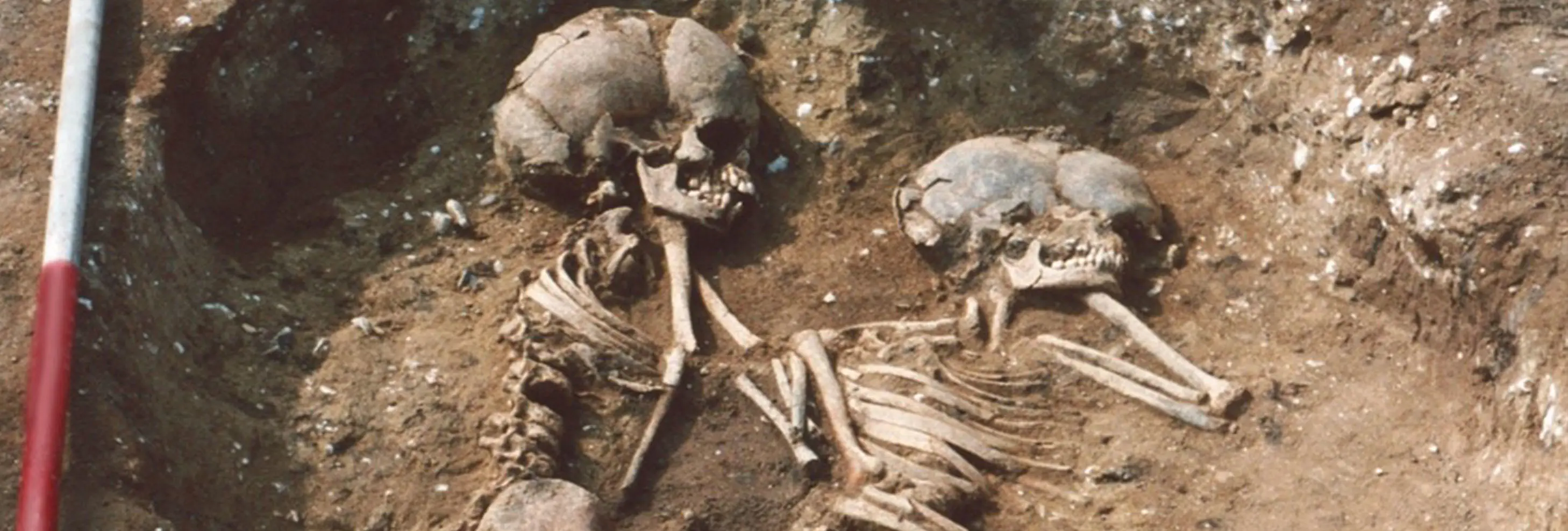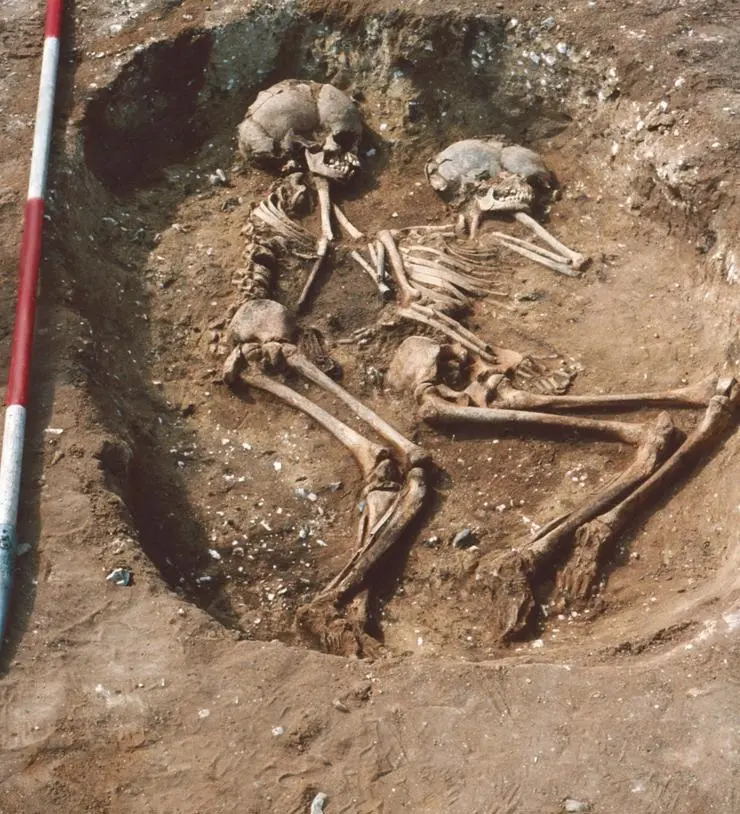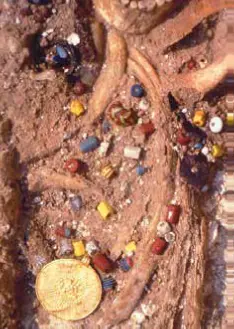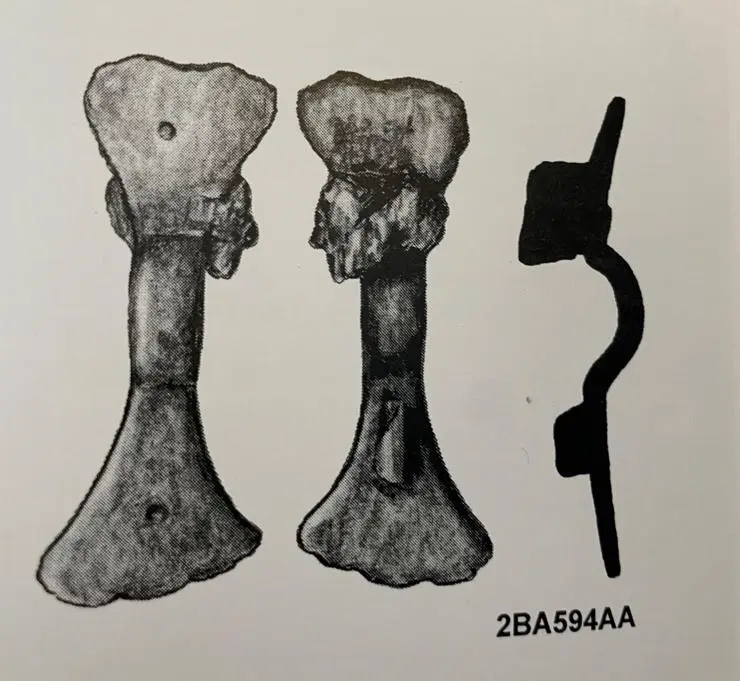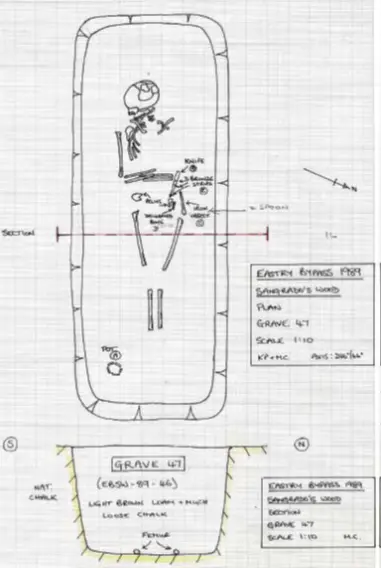University of Central Lancashire and Max Planck Institute for Evolutionary Anthropology lead largest ever early medieval population study - revealing personal stories of migration, family, and loss
One of the largest ever studies conducted on the early medieval population has revealed a host of individual and family stories, after experts analysed the DNA from more than 460 skeletons across 37 archaeological sites.
These new detailed results appear in Nature and a special issue of Current Archaeology, published today: using next generation genetic sequencing, the featured study provides unprecedented insight about migration, tradition, and loss in England’s early medieval families, impossible to see before now.
The analysis found that about 76 per cent of the ancestry in early medieval English populations originated from what is today northern Germany and southern Scandinavia, providing strong evidence for mass migration into the British Isles after the end of Roman occupation, and all the cultural changes that followed.
One of the most striking individual stories to come out of the study is that of a young girl buried in early 7th-century Kent. Describing 'Updown Girl', as she is dubbed in the special issue, Current Archaeology's Editor Carly Hilts said:
“Aged 10 or 11 when she died, this girl was buried in much the same way as the other early medieval individuals who were laid to rest at Updown, near Eastry. She was accompanied by very typical grave goods - a pot, a bone comb, a knife, and a spoon - and there was nothing to suggest that she had been treated differently, at least in death, even though the new genetic research highlights that her ancestry was very different to that of many of the people buried around her.
“The exciting thing about this study is how it brings long-forgotten human stories to life, revealing otherwise invisible family relationships and intrepid journeys made centuries ago, and shedding light on questions of migration, integration, and how burial customs varied within and between different communities.”
"The exciting thing about this study is how it brings long-forgotten human stories to life, revealing otherwise invisible family relationships and intrepid journeys made centuries ago."
— Carly Hilts, Editor of Current Archaeology
What is most amazing about Updown girl is that 33% of her DNA points to West African ancestry, most closely resembling Esan or Yoruba groups. From further work, it’s apparent that her African heritage came from her father’s side - possibly her grandad or great grandad.
Even more fascinating about this discovery is that two women found buried close by – sisters - had predominantly continental Northern European ancestry with a component from present-day France/Belgium. They were likely the great aunts of Updown Girl, and each was buried with several objects including; belt hanging sets, beads, knives, combs and spoons, all indicating they were part of an affluent family from the period. The fact that both the women and the girl were all buried in the same fashion and in proximity indicates that despite her different ancestry, the girl was treated as much a part of this early Anglo-Saxon family as her elders.
Then there’s the young teenager found at West Heslerton, an early medieval cemetery in Yorkshire. This child was found to have nearly 100% Continental Northern European ancestry, and had been buried with an equal-armed brooch, an early object dating to the later fifth or early sixth century with origins in Scandinavia. He was also found with beads and a knife. Traditionally – as with Updown Girl – these grave goods might be considered usual for a girl or a woman: but the genetics identified that this young person was biologically male. Importantly, skeletal isotopes flagged that he was unlikely to have been born locally and so was probably an early migrant into post-Roman Yorkshire.
Professor Duncan Sayer, project leader and archaeologist from the University of Central Lancashire, commented: “There are lots of reasons why a person might be buried in this type of costume. Given the age and the date this boy died, it may have been common for boys then to dress with a single brooch - the Romans wore a fibula brooch to fasten garments, often at the shoulder. It is also possible the brooch was not related to gender and was instead a treasured reminder of home – we can’t know for certain, but it is a lovely and very personal discovery.”
"It is also possible the brooch was not related to gender and was instead a treasured reminder of home – we can’t know for certain, but it is a lovely and very personal discovery."
— Duncan Sayer, Professor of Archaeology at UCLan
Elsewhere, in East Anglia, at a cemetery site near to RAF Lakenheath, there is a double grave which included two adolescents. A boy of around 15 years accompanied by a knife and buckle, was buried next to a girl aged around 12 years. Dr Stephan Schiffles, project leader and geneticist from the Max Planck Institute for Evolutionary Anthropology in Germany, offers some insight into their past: “The mitochondrial DNA of these two indicated that they were first-degree relatives. It looks like this pair were older brother and younger sister, and that they were buried at the same time.”
Nearby is a third burial – an older man found with a spear, knife, and pottery sherd, who shared the same Y chromosome as the boy described above. Their mitochondrial DNA was different, however, suggesting that the older male was the adolescents’ father. Given this man’s age, it is likely he was present at their burial and may have placed the artefacts they were found buried alongside – a father who sadly experienced the double tragedy of losing both his young children.
The team were also to drill down into the incredible, forensic detail of some of their findings; for example, they managed to identify the movement of one woman, found in Buckland (Dover, Kent), based purely on an understanding of the water she drank.
“Chemical signatures, isotopes, in teeth and bones leave traces from the water we drink. This woman’s isotopes indicate that she was not born in Kent but moved there when she was 15-25 years old.” says Dr Sam Leggett, archaeological scientist at the University of Edinburgh, who also supported the project.
This woman was 25-35 when she died and had almost 100% Continental Northern European ancestry. Together with DNA evidence, the isotope evidence suggests that she was born in Scandinavia – so how did she find her way to Kent? Did she move for marriage? Was she traded? No one else in the cemetery was identified as this woman’s biological relative, and what’s more, she was found with a gold bracteate, a decorated pendant common in Northern Europe, suggesting she was a significant person, at least to those who buried her.
Professor Duncan Sayer summarised the significance of the project:
“There’s the macro story here – the fact that we have conducted the largest ancient DNA projects in Europe, providing completely new insights into one the most difficult areas of British history to explore because of such limited source material. The research is a breakthrough: it challenges our perceptions and understanding of ancient England, showing how pivotal migration is to who we are, and for the first time allows us to explore community histories in new ways.
“Then there’s the personal elements of the research. Our work shows that this migration cannot be understood as one single event; rather, it’s made up of many different threads – of individual people and families adapting to new circumstances across the regions of Britain. It is amazing being able to weave those threads together to create the fabric of their stories, and in doing so, the rich and complex tapestry of our own past.”
"It is amazing being able to weave those threads together to create the fabric of these individual stories, and in doing so, the rich and complex tapestry of our own past."
— Duncan Sayer, Professor of Archaeology at UCLan

